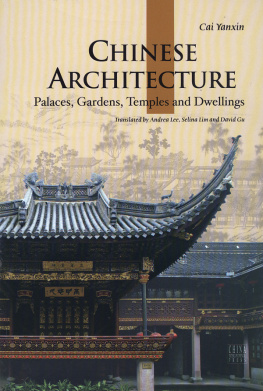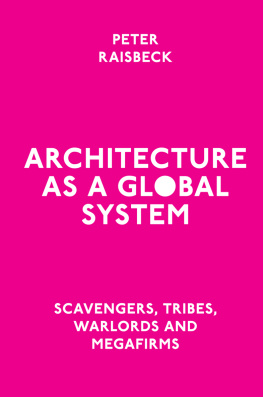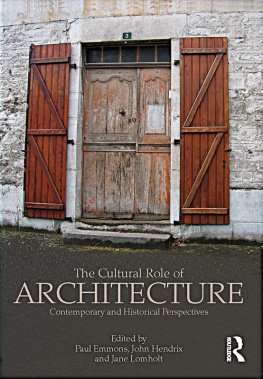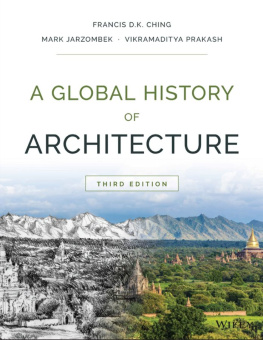A Global History of Architecture
Second Edition
Afterword

AFTERWORD
In the last decade, architectural educators have been asking for a textbook that looks beyond the Eurocentric approaches of the past. Ironically, recent decades have also seen the rising specter of nationalism, which has become a global phenomenon in its own right, as countries seek to establish their credentials in global historical narratives. This new nationalism, though it has played some role in awakening an awareness about local realities, has had, and continues to have, a dampening effect on learning about what lies over the horizon. The tension between the global and the national is the fundamental paradox of our age.
Today we live in a world that is significantly more static than centuries beforeboundaries are controlled by international law and political alliances, UNESCO protects architectural and urban marvels of the past, and local and national regulations govern what can and cannot be built. We control our actions for the sake of global tranquility. But inequities and injustices about the location of boundaries persist, and so, too, do the tensions that result from inward-looking ideologies. In this environment, the maxim know your neighbor is all the more important, but at the same time all the more elusive, since we can all, no matter what country we are from, easily revel in our singularityin the presumed uniqueness of our history.
This is something we need to guard against. A global history is not the history of all the modern nations added up like beads on an abacus. But neither is it a history that assumes a universal aspect to mankind and its productions. For a global history to be more than just dates and facts, it has to be rooted in the principle that each of us learns how he or she is indeed different in the eyes of others.
Copyright 2011 by John Wiley & Sons, Inc. All rights reserved
Published by John Wiley & Sons, Inc., Hoboken, New Jersey
Published simultaneously in Canada
No part of this publication may be reproduced, stored in a retrieval system, or transmitted in any form or by any means, electronic, mechanical, photocopying, recording, scanning, or otherwise, except as permitted under Section 107 or 108 of the 1976 United States Copyright Act, without either the prior written permission of the Publisher, or authorization through payment of the appropriate per-copy fee to the Copyright Clearance Center, 222 Rosewood Drive, Danvers, MA 01923, (978) 750-8400, fax (978) 646-8600, or on the web at www.copyright.com. Requests to the Publisher for permission should be addressed to the Permissions Department, John Wiley & Sons, Inc., 111 River Street, Hoboken, NJ 07030, (201) 748-6011, fax (201) 748-6008, or online at http://www.wiley.com/go/permission.
Limit of Liability/Disclaimer of Warranty: While the publisher and the author have used their best efforts in preparing this book, they make no representations or warranties with respect to the accuracy or completeness of the contents of this book and specifically disclaim any implied warranties of merchantability or fitness for a particular purpose. No warranty may be created or extended by sales representatives or written sales materials. The advice and strategies contained herein may not be suitable for your situation. You should consult with a professional where appropriate. Neither the publisher nor the author shall be liable for any loss of profit or any other commercial damages, including but not limited to special, incidental, consequential, or other damages.
For general information about our other products and services, please contact our Customer Care Department within the United States at (800) 762-2974, outside the United States at (317) 572-3993 or fax (317) 572-4002.
Wiley also publishes its books in a variety of electronic formats. Some content that appears in print may not be available in electronic books. For more information about Wiley products, visit our web site at www.wiley.com.
Library of Congress Cataloging-in-Publication Data
Ching, Frank, 1943
A global history of architecture / Francis D.K. Ching, Mark M. Jarzombek, Vikramaditya Prakash. 2nd ed.
p. cm.
Includes index.
ISBN 978-0-470-40257-3 (hardback)
1. ArchitectureHistory. I. Jarzombek, Mark. II. Prakash, Vikramaditya. III. Title.
NA200.C493 2010
720.9dc22
2010040984
Preface
What is a global history of architecture? There is, of course, no single answer, just as there is no single way to define words like global, history, and architecture. Nonetheless, these words are not completely open-ended, and they serve here as the vectors that have helped us construct the narratives of this volume. With this book, we hope to provoke discussion about these terms, and at the same time furnish a framework students can use to begin discussion in the classroom.
This book is global in that it aspires to represent the history of the whole world. Whereas any such book must inevitably be selective about what it can and cannot include, we have attempted to represent a wide swath of the globe, in all its diversity. At the same time, for us, the global is not just a geographic construct that can be simply contrasted with the regional or local: the global is also a function of the human imagination, and one of the things we are very interested in is the manner in which local histories imagine the world. This book, however, is not about the sum of all local histories. Its mission is bound to the discipline of architecture, which requires us to see connections, tensions, and associations that transcend so-called local perspectives. In that respect, our narrative is only one of many possible narratives.
Synchrony has served as a powerful frame for our discussion. For instance, as much as Seouls Gyeongbok Palace is today heralded in Korea as an example of traditional Korean architecture, we note that it also belongs to a Eurasian building campaign that stretched from Japan (the Katsura Imperial Villa), through China (Beijing and the Ming Tombs), to Persia (Isfahan), India (the Taj Mahal), Turkey (the Suleymaniye Complex), Italy (St. Peters Basilica and the Villa Rotonda), Spain (El Escorial), France (Chambord), and Russia (Cathedral of the Assumption). The synchrony of these buildings opens up for us questions such as, What did one person know about the other? How did information travel? How did architectural culture move or become translated? Some of these questions we have addressed directly; others we have raised and left unanswered. But to call Gyeongbok Palace traditional is to overlook the extraordinary modernity of all the buildings listed above.
This is not to say that our story is only the story of influence and connection. There are numerous examples of architectural production where the specific circumstances of their making were unique to their own immediate context. Indeed, we have tried to be faithful to the specificities of each individual building while acknowledging that every specific architectural project is always embedded in a larger world that affects it directly or indirectly. These effects could be a consequence of the forces of economy, trade, and syncretism; of war, conquest, and colonization; or the exchange of knowledge, whether forced, borrowed, or bought.














